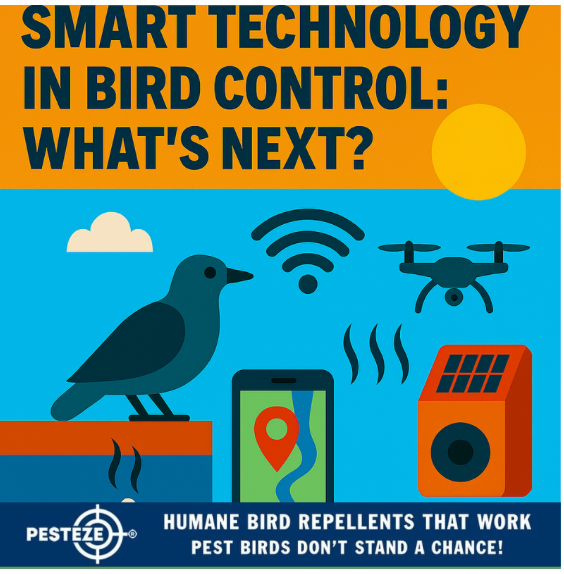SMART TECHNOLOGY IN BIRD CONTROL: WHAT'S NEXT?

SMART TECHNOLOGY IN BIRD CONTROL: WHAT'S NEXT?
SUMMARY
Bird control is evolving rapidly with cutting-edge technological innovations that offer more effective, humane, and intelligent solutions for managing avian populations in urban and rural environments.
FEATURES
- AI-Powered Detection: Advanced computer vision systems that identify and track bird movement patterns.
- Ultrasonic Deterrence: Sophisticated sound-based technologies that humanely discourage bird settlements.
- Smart Sensor Networks: Real-time monitoring and adaptive bird management solutions.
- Eco-Friendly Innovations: Sustainable technologies that protect both property and wildlife.
- Cost-Effective Approaches:Intelligent systems that reduce long-term maintenance and cleanup expenses.
GUIDE DESCRIPTION
The landscape of bird control is undergoing a technological revolution in 2025, with smart technologies offering unprecedented solutions to age-old challenges. Artificial intelligence and Internet of Things (IoT) technologies are transforming how we approach bird management, moving far beyond traditional deterrent methods.
Modern bird control solutions leverage advanced sensor technologies that provide real-time monitoring and adaptive response mechanisms. These intelligent systems can distinguish between different bird species, understand their behavior patterns, and implement targeted deterrence strategies without causing harm.
Key technological innovations include:
- AI-Driven Visual Recognition: Cameras with machine learning algorithms that can identify specific bird species and their behavioral patterns.
- Precision Acoustic Deterrents: Ultrasonic devices that emit species-specific sound frequencies, discouraging birds without causing physical harm.
- Smart Environmental Sensors: Networks that monitor temperature, humidity, and other environmental factors that attract birds.
The environmental implications are significant. Unlike traditional methods that rely on physical barriers or harmful chemicals, these smart technologies offer a more humane and sustainable approach to bird management. They provide precise, targeted solutions that protect both human infrastructure and wildlife populations.
Economic benefits are equally compelling. Predictive maintenance and early intervention capabilities can save businesses and municipalities substantial resources by preventing potential damage and reducing cleanup costs.
As we move forward, the integration of machine learning, advanced sensors, and real-time data analysis promises to revolutionize bird control, creating smarter, more efficient, and more compassionate solutions for managing human-wildlife interactions.
- Pukhraj Sharma


Comments 0